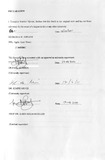| dc.description.abstract | Water is critically important to the livelihoods of many populations especially the rural
poor primarily engaged in agriculture. In many developing countries, water is a major
factor constraining agricultural output and their incomes. Additionally, a large percent of
the world's food supply comes from irrigated agriculture, and agriculture is the single
largest user of fresh water on the planet and it is also the largest economic activity of the
rural poor. Therefore, improved water management for agriculture through efficient use
can improve the livelihoods of a great proportion of the rural communities.
This study investigated technical and water use efficiency in small holder irrigation
farming in the Naivasha basin. The study used farm household data to; explore the
overall technical efficiency, water use efficiency and establish the factors influencing
water use efficiency. Data envelopment analysis, general algebraic and modeling system
and Tobit regression methods were used in analyzing cross sectional data from 201 small
scale irrigation farmers in the lake Naivasha basin.
The results indicated that on average, small scale farmers were only 63 percent
technically efficient indicating that substantial inefficiencies occurred in farming
operations of the sample farm households. The sub-vector efficiencies for water
demonstrated even larger inefficiencies. Average water use efficiency was only 31
percent again indicating that more farms were highly inefficient in the use of water
compared to overall technical efficiency. It implies that when all other inputs remain
constant, the current output could be produced using, on average, 69 percent less
irrigation water. Therefore, there is a considerable scope for reducing the water use, even
with the technology currently available. This means that if efficiency improves, it should
be possible to reallocate a fraction of the water to other water demands without really
endangering production or the role small-scale irrigation might play for rural
development.
This study also demonstrated that crop choice, choice of irrigation technologies and the
level of farm fragmentation were significant factors influencing water use efficiency in
small holder irrigation in the Naivasha basin. Therefore, policy intervention in terms of
better water management are recommended whereby water use efficiencies should be
well integrated in agricultural research and policy formulation processes to ensure
continued and sustainable use and efficient allocation of natural resources thus enhancing
food availability and incomes for the rural poor. With regard to the efficiency findings
from this study, it is recommended that more emphasis should be laid on orienting
farmers towards appropriate choice of irrigation technologies, appropriate choice of crop
combinations in their farms and the desirable level of farm fragmentation since these are
important in explaining water use efficiency. | en |

